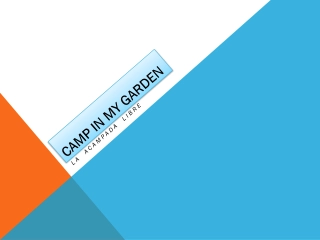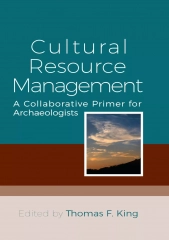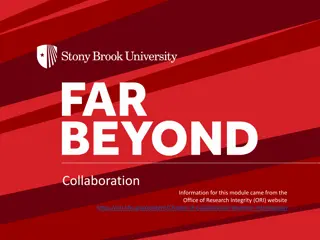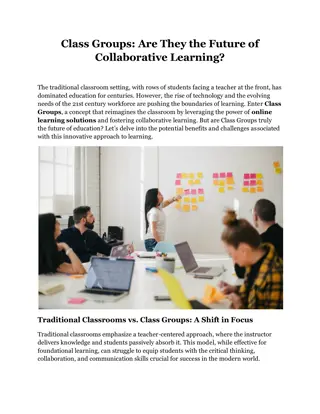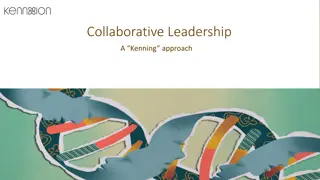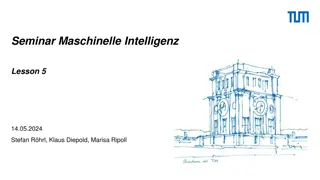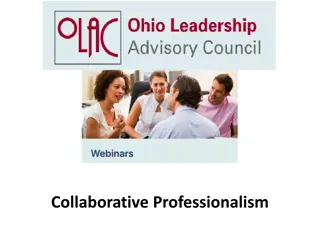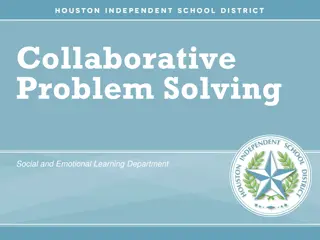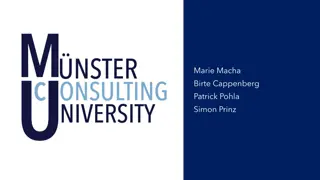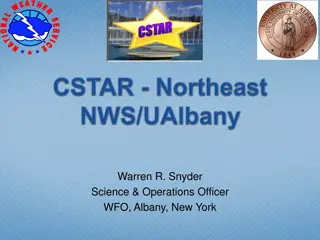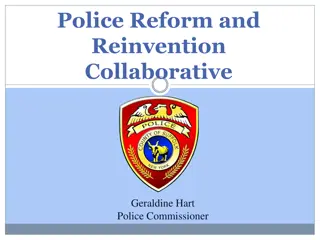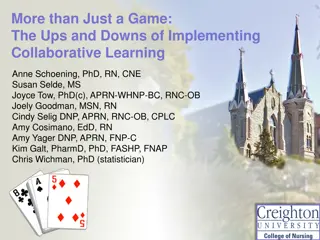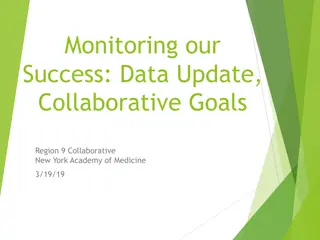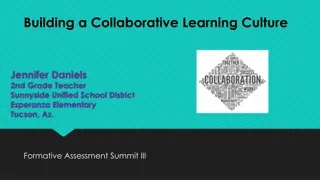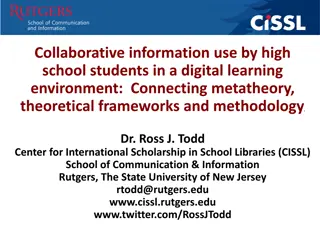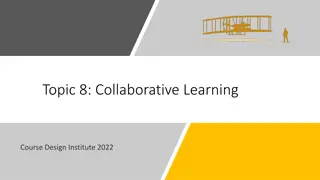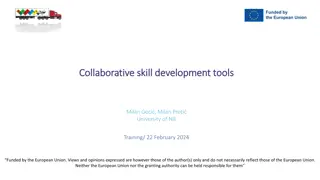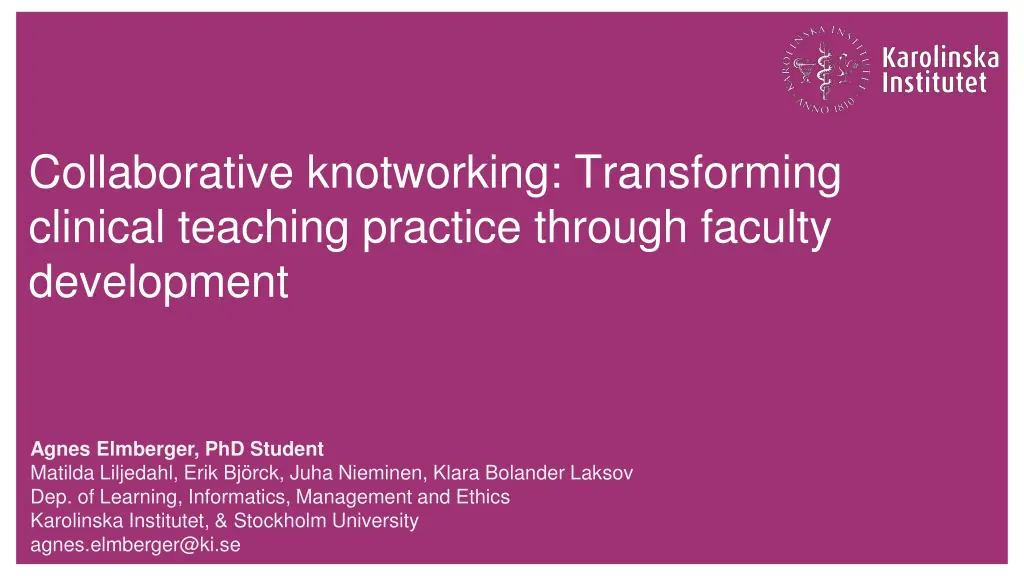
Transforming Clinical Teaching Practice Through Faculty Development
Explore how faculty development programs can enhance clinical teaching practice by integrating pedagogical tools into clinical settings. The study utilizes activity theory and thematic analysis to investigate the effectiveness and outcomes of such initiatives, aiming to improve knowledge transfer and interprofessional collaboration.
Download Presentation

Please find below an Image/Link to download the presentation.
The content on the website is provided AS IS for your information and personal use only. It may not be sold, licensed, or shared on other websites without obtaining consent from the author. If you encounter any issues during the download, it is possible that the publisher has removed the file from their server.
You are allowed to download the files provided on this website for personal or commercial use, subject to the condition that they are used lawfully. All files are the property of their respective owners.
The content on the website is provided AS IS for your information and personal use only. It may not be sold, licensed, or shared on other websites without obtaining consent from the author.
E N D
Presentation Transcript
Collaborative knotworking: Transforming clinical teaching practice through faculty development Agnes Elmberger, PhD Student Matilda Liljedahl, Erik Bj rck, Juha Nieminen, Klara Bolander Laksov Dep. of Learning, Informatics, Management and Ethics Karolinska Institutet, & Stockholm University agnes.elmberger@ki.se
FACULTY DEVELOPMENT Activities (health) professionals pursue to improve their knowledge, skills and behaviours as teachers (Steinert 2014, p.4) Photo: Svensk, C. Education
THE PROBLEM Effectiveness and outcomes (e.g. Amundsen & Wilson 2012; Gibbs & Coffey 2004; Steinert et al. 2016, Stes 2010) Scope and nature (Amundsen & Wilson 2012; Leslie et al. 2013; Sorinola et al. 2017; Steinert et al. 2016) Knowledge transfer ? Photo: Svensk, C. Education Photo: Cronberg, E. People at KTC
THE QUESTION How do clinical teachers integrate pedagogical tools developed in faculty development into clinical settings? Photo: Skog, L. kiutbildning5626.jpg
THE METHOD Activity theory 14 clinical teachers, different professions Focus group interviews Thematic analysis (Braun & Clarke, 2006) Photo: Skog, L. kiutbildning5626.jpg
ACTIVITY THEORY Analysis of complex interactions between systems and individuals (Engestr m 1999, Varpio 2017) Tools The activity system Subject Object Outcome Contradictions within and between activities (Engestr m 1987; Virkkunen and Newnham 2013) Division of Rules Community labour
THE CONTEXT One-year faculty development program Develop and transfer educational innovations into workplace (Bolander Laksov et al. 2020) Photo: Cronberg, E. Doctors at KTC
Pedagogical tools developed Pedagogical tools Learning activity to train interprofessional communication, including change of schedule for clinical placement of students. Learning activity to increase student understanding of inter professional rounds, including an educational film. Educational film to support clinical supervisors in giving feedback Reorganisation of clinical placements to enable peer learning between students and between clinical supervisors. Learning activity to increase inter professional collaboration at rounds, including pedagogical tool consisting of interprofessiona check list. Photo: Education, Camilla Svensk
RESULTS (A) Faculty development system Workplace system (academic context) (clinical context) Generalized object Educating students to provide good patient care Tools Tools Specific object Developing and integrating educational innovation Specific object Maintaining routines of education and health care Subject Subject Faculty development participants Teaching clinicians Division of labour Division of labour Rules Rules Community Faculty developers, peers in the programme Community Clinical team, managers, students, patients Collaborative knotworking (B) Transformation Negotiation Reconceptualisation Reconciliation
RESULTS Developing & transferring innovation Routine tasks Team Clinician CWP FDP Resistance to change Unwillingness to use innovation FDP: Faculty development program CWP: Clinical workplace
RESULTS 1. Negotiating a mandate for change The Faculty development programme Working in a team Being an in-group peer Educational formal roles that communicate Photo: Education, Camilla Svensk
RESULTS 1. Negotiating a mandate for change 2. Reconceptualising the innovation Iterative communication and interaction Testing and changing the tool Accept changes in form and use Photo: Education, Camilla Svensk
RESULTS 1. Negotiating a mandate for change 2. Reconceptualising the innovation 3. Reconciliation between systems Varying degrees of change depend on extent of change required Initial misalignment of objects reconciled No clear end point, subject to re-negotiation Photo: Education, Camilla Svensk
RESULTS (A) Faculty development system Workplace system (academic context) (clinical context) Generalized object Educating students to provide good patient care Tools Tools Specific object Developing and integrating educational innovation Specific object Maintaining routines of education and health care Subject Subject Faculty development participants Teaching clinicians Division of labour Division of labour Rules Rules Community Faculty developers, peers in the programme Community Clinical team, managers, students, patients Collaborative knotworking (B) Transformation Negotiation Reconceptualisation Reconciliation
Educational change is local: Collaborative knotworking requires transformation of the workplace as well as the innovation/ innovator The workplace needs to be an agent in faculty development
Thank you! Collaborators: Matilda Liljedahl, Erik Bj rck, Juha Nieminen, Klara Bolander Laksov Funding: Stockholm City Council The Swedish Society of Medicine Karolinska Institutet agnes.elmberger@ki.se
Our publications in this project Bolander Laksov, K., Elmberger, A., Liljedahl, M., & Bj rck, E. (2020). Shifting to Team-based Faculty Development: a Programme designed to facilitate change in Medical Education. Higher Education Research & Development, 1-15. Elmberger, A., Bj rck, E., Liljedahl, M., Nieminen, J., & Laksov, K. B. (2019). Contradictions in clinical teachers engagement in educational development: an activity theory analysis. Advances in Health Sciences Education, 24(1), 125-140. Elmberger, A., Bj rck, E., Nieminen, J., Liljedahl, M., & Laksov, K. B. (2020). Collaborative knotworking transforming clinical teaching practice through faculty development. BMC medical education, 20(1), 1-11. Photo: Education, Camilla Svensk
References Amundsen, C., & Wilson, M. (2012). Are we asking the right questions? A conceptual review of the educational development literature in higher education. Review of Educational Research, 82(1), 90 126. doi:10.3102/0034654312438409 Braun, V., & Clarke, V. (2006). Using thematic analysis in psychology. Qualitative Research in Psychology, 3(2), 77 101. doi:10.1191/1478088706qp063oa Engestr m, Y. (1987). Learning by expanding: An activity-theoretical approach to developmental research. Helsinki: Orienta-konsultit. Engestr m, Y., Miettinen, R., & Punam ki, R.-L. (1999). Perspectives on activity theory. Cambridge: Cambridge University Press. Gibbs, G., & Coffey, M. (2004). The impact of training of university teachers on their teaching skills, their approach to teaching and the approach to learning of their students. Active Learning in Higher Education, 5(1), 87 100. doi:10.1177/1469787404040463 Leslie, K., Baker, L., Egan-Lee, E., Esdaile, M., & Reeves, S. (2013). Advancing Faculty Development in Medical Education. Academic Medicine, 88(7), 1038 1045. doi:10.1097/ACM.0b013e318294fd29 Sorinola, O. O., Thistlethwaite, J., Davies, D., & Peile, E. (2017). Realist evaluation of faculty development for medical educators : What works for whom and why in the long-term. Medical Teacher, 39(4), 422 4
References Steinert, Y. (2014). Faculty Development: Core Concepts and Principles. In Y. Steinert (Ed.), Faculty Development in the Health Professions: A Focus on Research and Practice (pp. 3 25). New York London: Springer Dordrecht Heidelberg. Steinert, Y., Mann, K., Anderson, B., Barnett, B. M., Centeno, A., Naismith, L., et al. (2016). A systematic review of faculty development initiatives designed to enhance teaching effectiveness: A 10-year update: BEME Guide No. 40. Medical Teacher, 38(8), 769 786. doi:10.1080/0142159X.2016.1181851 Stes, A., Min-Leliveld, M., Gijbels, D., & Van Petegem, P. (2010). The impact of instructional development in higher education: The state-of-the-art of the research. Educational Research Review, 5(1), 25 49. doi:10.1016/j.edurev.2009.07.001 Varpio, L., Aschenbrener, C., & Bates, J. (2017). Tackling wicked problems: How theories of agency can provide new insights. Medical Education, 51(4), 353 365. doi:10.1111/medu.13160 Virkkunen, J., & Newnham, D. S. (2013). The change laboratory: A tool for collaborative development of work and education. Rotterdam: Sense Publishers.
Photos http://mediabank.ki.se/ Sirborn, U. Aula Medica, (CC), alterations of picture: black-white Svensk, C. Education, (CC), alterations of picture: black-white Skog, L. kiutbildning5626.jpg, (CC), alterations of picture: black-white Cronberg, E. Doctors at KTC, (CC), alterations of picture: black-white Cronberg, E. People at KTC, (CC), alterations of picture: black-white

